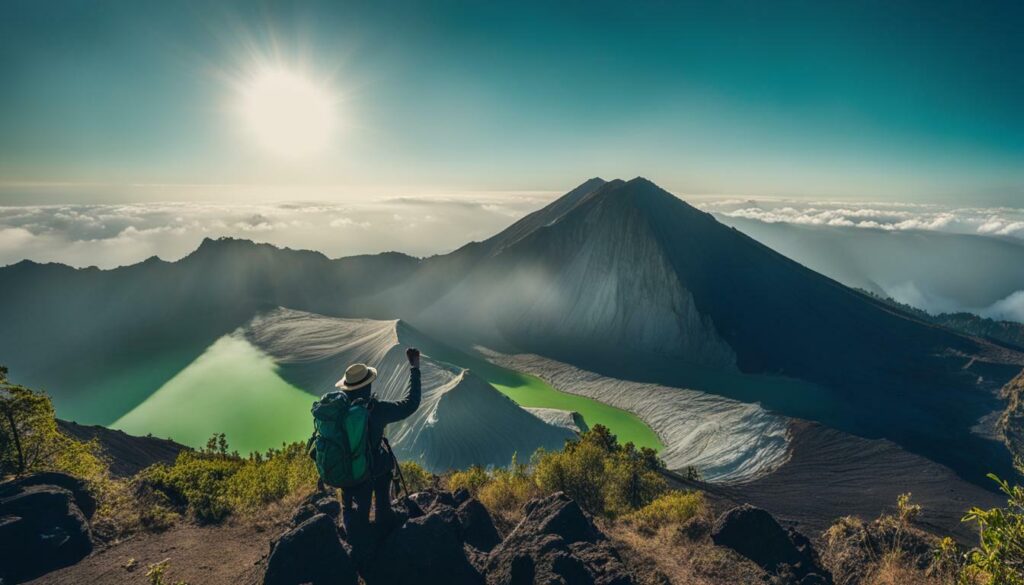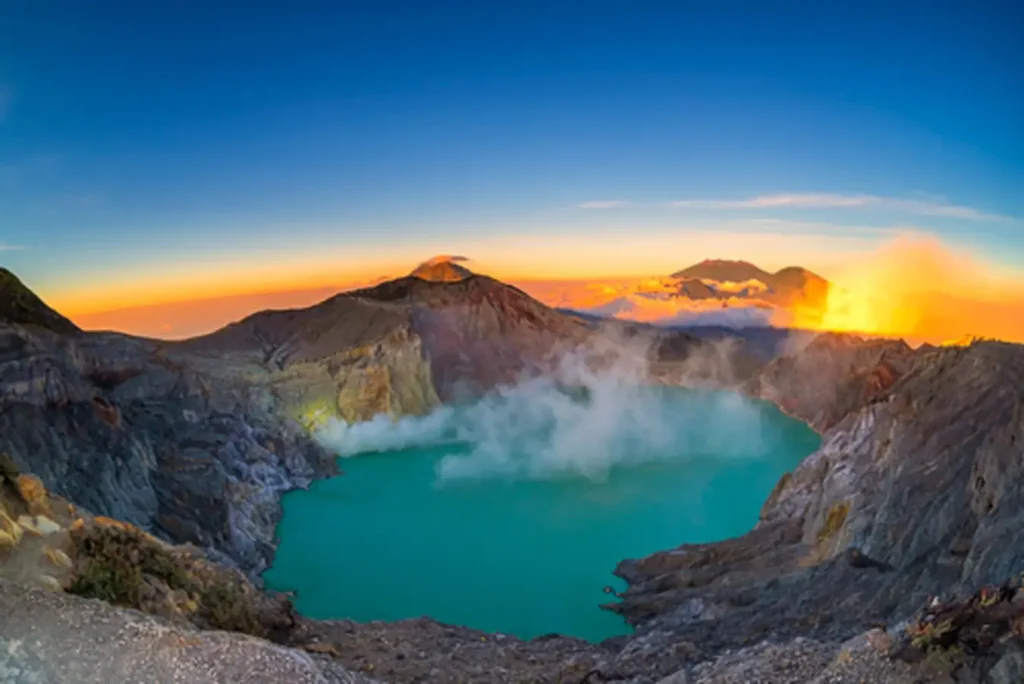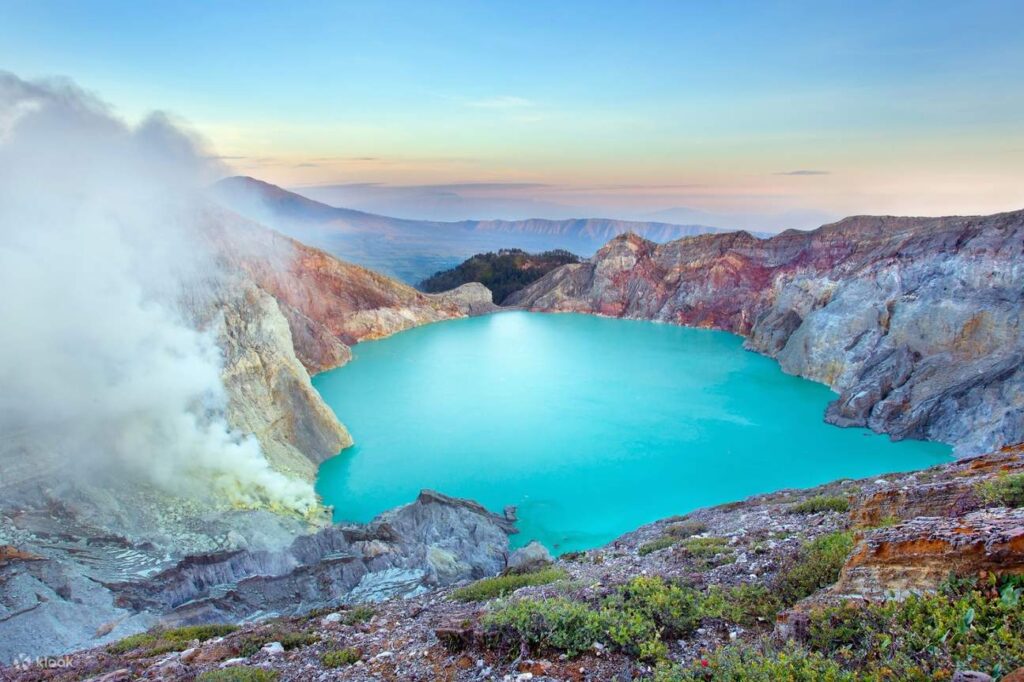Planning a trip to Ijen? It’s essential to be mindful of the weather conditions before you embark on your adventure. The Ijen area, which includes the famous Ijen volcano and highland region of East Java, experiences varying weather patterns throughout the year. Understanding what to expect will help you pack accordingly and prepare for an enjoyable and safe trip.
Key Takeaways
- Knowing the Ijen weather conditions is crucial when planning a trip.
- The Ijen area experiences varying weather patterns throughout the year.
- Understanding the weather will help you pack accordingly and prepare for a safe and enjoyable trip.
- Don’t forget to check the weather forecast before your trip.
- Knowing the best time to visit for specific activities will help you make the most of your time in Ijen.
Ijen Weather Conditions: Temperature and Forecast
Understanding the temperature variations in Ijen is crucial when planning a trip to this destination. The weather in Ijen can vary significantly, depending on the season and time of day. The temperature can range from 10°C to 25°C, with the coolest months from July to August.
It’s important to check the weather forecast before your trip to Ijen to ensure you are well-prepared. You can find up-to-date weather reports and forecasts on various websites, including the Indonesian Meteorology, Climatology and Geophysics Agency (BMKG) website.
Packing appropriate clothing based on the weather conditions is essential for a comfortable and safe trip. We recommend bringing lightweight, moisture-wicking clothes for the warmer months and layering with warmer clothes for the cooler months. Don’t forget to bring sturdy hiking shoes as well.
Best Time to Visit Ijen: Sunrise and Blue Fire Weather
One of the main reasons people visit Ijen is to witness the stunning sunrise and the mesmerizing blue fire phenomenon. To make the most of these experiences, it’s essential to plan your trip at the right time of year when the weather is optimal.
The best time to visit Ijen for sunrise is during the dry season, which runs from May to September. During this time, the weather is typically clear with little to no rain. The dry conditions make it easier to hike to the crater rim and witness the sun rising above the volcanic landscape.
For the blue fire phenomenon, the best time to visit Ijen is during the rainy season from November to March. The moisture in the air provides optimal conditions for the blue flames to ignite and create a surreal spectacle. However, it’s important to note that the rainy season can bring heavy rainfall and tough hiking conditions, so it’s essential to be prepared with appropriate gear.
It’s worth noting that the weather can change quickly in Ijen, so it’s essential to check the forecast before your trip and be prepared for any sudden changes. Additionally, it’s always a good idea to hire a local guide who can provide insights into the weather patterns and help you plan your visit.
Exploring Ijen: Hiking and Outdoor Adventures
As a popular hiking destination, Ijen’s weather plays an essential role in ensuring a safe and enjoyable outdoor experience. The best time to hike to the crater rim is during the dry season, which typically runs from June to September. During this time, the weather is cooler, and there is less rainfall, making the trail less slippery and easier to navigate.
It’s important to note that the temperatures at higher altitudes are considerably colder than those on the lowland areas. Temperatures at the summit can drop as low as 5°C, so it’s crucial to pack warm clothing, including jackets, gloves, and hats, for a comfortable hiking experience.
It’s also essential to check the weather forecast before embarking on a hiking trip to Ijen. Sudden weather changes can occur, and it’s important to be prepared for unexpected rain or storms. Ensure you have the proper hiking gear, including waterproof clothing and sturdy hiking boots, to navigate the trails safely.
In addition to hiking, the surrounding highlands offer various outdoor activities, including camping, trekking, and trail running. The ideal time for these activities is also during the dry season. However, it’s essential to check the weather forecast before setting up camp or planning a long trek to a remote area.
Staying Safe During Your Adventure
When hiking or engaging in outdoor activities in Ijen, it’s crucial to prioritize your safety. Always follow the designated trails, and avoid straying off the path, especially during bad weather conditions. It’s also vital to inform someone of your itinerary and expected return time.
Be mindful of the weather conditions, and avoid hiking or engaging in outdoor activities during heavy rain or storms. Additionally, be aware that the blue fire phenomenon occurs in an active volcanic area, and it’s crucial to respect all safety restrictions and barriers in place.
“Safety comes first during any outdoor activity in Ijen. Be prepared, stay alert, and follow all safety guidelines and restrictions to ensure an unforgettable experience.”
In summary, understanding the weather conditions is crucial when planning a hiking or outdoor adventure in Ijen. Checking the weather forecast, packing appropriate clothing, and prioritizing safety will ensure a memorable and enjoyable experience in this beautiful destination.
Conclusion
Planning a trip to Ijen can be an exciting and memorable experience. However, it’s essential to understand the Ijen weather conditions to ensure a safe and enjoyable journey. By checking the temperature variations and forecast, you can pack appropriate clothing and plan your activities accordingly.
If you’re interested in seeing the mesmerizing sunrise or blue fire phenomenon, it’s crucial to know the best time to visit Ijen. Similarly, if you want to indulge in hiking or outdoor activities, understanding the ideal weather conditions is critical.
Remember, the weather in Ijen can be unpredictable, so being prepared is essential. Plan ahead, pack accordingly, and be flexible with your itinerary to make the most of your visit to this stunning destination.
FAQ
What is the weather like in Ijen?
The weather in Ijen can vary throughout the year. It is generally cooler in the highland region and can get quite chilly, especially at night. However, temperatures can still rise during the day, so it’s important to be prepared for both warm and cool weather conditions.
When is the best time to visit Ijen?
The best time to visit Ijen is during the dry season, which typically falls between April and October. During this time, the weather is generally more predictable, and you are less likely to encounter heavy rainfall. This makes it easier to explore the area and enjoy outdoor activities.
What is the temperature like in Ijen?
The temperature in Ijen can range from around 15°C (59°F) to 25°C (77°F) during the day, depending on the season. However, it can be much colder at night, with temperatures dropping to as low as 10°C (50°F) or even lower. It’s important to pack warm clothing, especially if you plan to visit Ijen during the cooler months.
Is it necessary to check the weather forecast before visiting Ijen?
Yes, it is highly recommended to check the weather forecast before your trip to Ijen. The weather can change quickly in this region, and it’s important to be prepared for any potential rain or storms. Checking the forecast will help you plan your activities and ensure you have the right gear and clothing for the conditions.
What is the best time to witness the sunrise in Ijen?
The best time to witness the sunrise in Ijen is early morning, usually between 4:30 AM and 5:30 AM. During this time, the sky is clear, and the sun creates a breathtaking view as it rises over the Ijen crater. It’s important to check the weather conditions and plan your visit accordingly to make the most of this magical experience.
Can you see the blue fire phenomenon in Ijen all year round?
Yes, the blue fire phenomenon can be seen in Ijen throughout the year. However, it is more visible during the dry season when the weather conditions are clearer. It’s important to note that witnessing the blue fire requires a nighttime hike to the crater, and it’s recommended to join a guided tour for safety and guidance.
What is the best time for hiking in Ijen?
The best time for hiking in Ijen is during the cooler months, which typically fall between May and September. During this time, the temperature is more comfortable for hiking, and there is less chance of encountering heavy rainfall. It’s important to check the weather conditions and plan your hike accordingly to ensure a safe and enjoyable experience.





